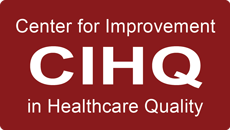Improving patients’ perception of care is an essential component of quality and reflects the leadership and culture of a healthcare organization.
The Centers for Medicare and Medicaid Services (CMS) initiated Star ratings to help consumers compare healthcare and insurance providers so they can make informed choices about where to receive high quality healthcare. These ratings follow the format used in everything from restaurants to car dealers: Five stars equate to significantly above-average quality and one star, well, that means the consumers will go elsewhere if they have a choice.
Flying under the Star-rating radar is the increased significance MCAHPS (Member Consumer Assessment of Healthcare Providers and Systems) play in the amount of money and volume health providers gain, lose, or leave on the table each year.
And a significant cohort of patients – those age 65 and older -- do have choices. Specifically, Medicare Advantage members, who will stick with clinicians they like but are sticklers for a high-quality personalized experience.
In just the past three years MCAHPS patient experience weight in the overall Star ratings has gone from 20 percent to 32 percent.
Historically, Healthcare Effectiveness Data and Information Set (HEDIS) was used to help pinpoint performance gaps and inform the development of targets for improvement.
Today, HEDIS measures count for less -- decreased from 33 percent in 2020 to 14 percent in 2023 – and the weight of MCAHPS measures has more than doubled, from 15 percent in 2021 to 31 percent in 2023. Almost 60 percent of the overall Star rating is related to MCAHPS and nearly 75 percent of the questions are related to patient perception of care.
In an added plot twist, low MCAHPS can impact patient volume. Clinicians receiving four- and five-star ratings may be afforded wider open enrollment windows. And the best of the best might even have no co-pays for their patients.
Providers with average or worse Star ratings could face limited enrollment periods, and their patients may have co-pays.
Complain all you want about these changes in Star ratings reimbursement models, facts are facts. There is a non-debatable values proposition in getting this right.
First steps in scoring well in this arena: Know your data. The adage, “You can’t manage what you don’t measure,” rings true in healthcare. You can’t improve what you don’t know. We find that many providers are unfamiliar with the survey tools and how they are measured, yet their compensation is impacted by this data. Providers may be receiving their monthly numbers but don’t know what they mean, much less what to do about it.
Communication is a two-way street. If your leaders in the C-suite aren’t personally engaged in conversations and listening tours with patients and employees in the direct care units, they are missing the golden opportunity to improve patient experience and employee engagement.
And while healthcare today is delivered via high-tech wizardry, high touch is the magic that leads to five stars. Every team member who interacts with patients and their family members has the power to influence the perceived patient experience. It’s not just the hands-on physicians and bedside caregivers who can make or break your scores. It’s housekeeping, nutritional services, coders, billing, registration clerks, the cafeteria and gift shop crews and the parking lot attendants!
The perceived care experience starts the moment a patient begins looking for their healthcare provider – this means from the ease of online web experience to when the patient steps foot on your property. It’s everyone’s responsibility to make sure the journey is consistent from the front door to the final bill.
There’s much to be said about the importance of being nice and connecting with your team and your patients. But there’s a cost benefit to the bottom line: Proficiency in mastering patient experience and a half-star rating change can mean millions of dollars to your organization.
MCAHPS measures largely have gone unnoticed amid the myriad issues keeping healthcare leaders awake at night. Workforce turnover and its running buddies, recruitment and retention; burnout; hybrid working; AI’s place in the healthcare firmament. Some good news, though: High-performing physicians on patient perception of care surveys are likely to perform well on MCAHPS.
Understanding how physicians and healthcare organizations are being measured going forward – and how high the stakes are if they don’t get it right – is crucial.
Contact Lara Burnside: lara@cseleadership.com
Find CSE Leadership on Linked In


